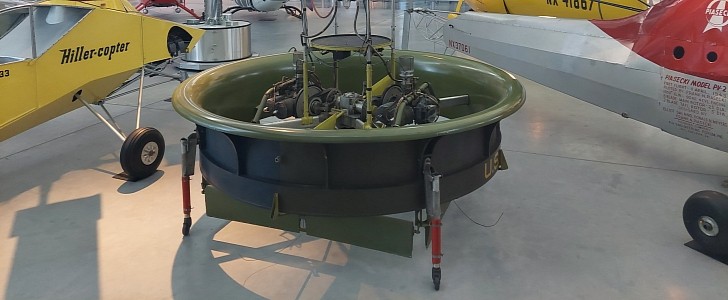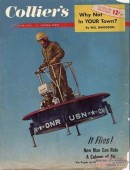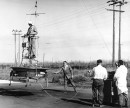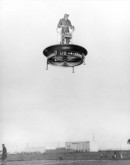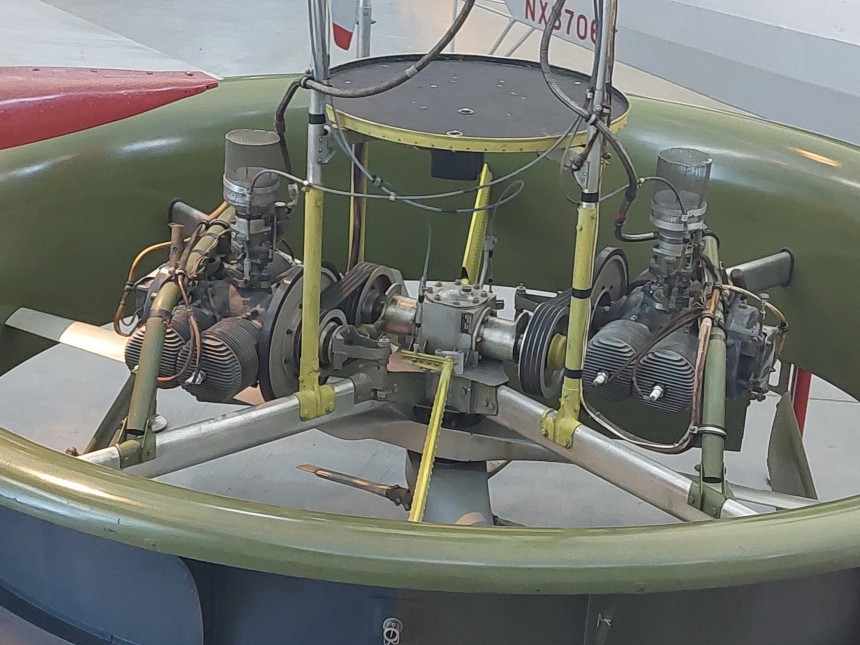When we tell you the U.S. Military tried absolutely everything to try and one-up the Soviets during the Cold War, we mean it in with the most literal form possible.
Because in no other sane society would anything as the ludicrously bat-you-know-what insane as the Hiller VZ-1 Pawnee Flying Platform leave the drawing board. Of all the aircraft of any kind built by all branches of the U.S Military, the Flying Platform, as we'll refer to it from now on, probably poses the most threat to its operator of any that saw the light of day.
We always love to give shoutouts to underrated museums, so we gather information on the Flying Platform directly from the Hiller Aviation Museum. The undisputed go-to place to learn about some of the bonkers rotor-craft the Fresno County, California-based company got up to building during the early Cold War.
According to documents and photos procured by the museum, the concept actually began as a design study with the forbearers of the modern NASA. The National Advisory Committee for Aeronautics (NACA) took on many of the roles NASA and aerospace contractors do today.
I.e., research novel and exciting ways of ferrying goods and people around as quickly and efficiently as possible. It was NACA's scientist Charles Zimmerman who formally proposed the idea of a hovering personal mobile platform for combat infantry.
In September 1953, the Hiller Corporation signed a deal with the American Office of Naval Research in their sciences division to manufacture a prototype Flying Platform design based upon Zimmerman's "Flying Shoes" blueprints. The design also set out to prove whether a rotor mounted to a craft on the bottom of the airframe instead of on the top had any bearing on the stability of a rotorcraft.
The end result was a vehicle that fit the definition of a dank meme six decades before such phenomena entered the common lexicon. It was peculiar in shape, with a large barrel-like outer duct housing three main engines and a control platform for an M14 or M16 rifle carrying field infantryman could use to hover over the even my, raining death and destruction from above.
The craft was powered by three air-cooled four-cylinder piston engines that jetted a combined 120 horsepower for the set. From what urban legends say, the machine sounded like a demon-possessed food blender as the engines sputtered to life. Its first manned test was conducted on January 27th, 1957. To our great surprise, the result was not an unfortunate pilot being turned into the world's worst sausage meat.
Even so, the seven-foot-tall, eight-foot-wide, and 180lb airframe was temperamental and difficult to control. The astute among you will no doubt draw the comparison between this psycho hovercraft platform and the Apollo Lunar Lander.
The matching landing legs are an uncanny similarity. Sure enough, a full-sized lander trainer was constructed using the same principle as Hiller's Flying Platform, only complete with a jet engine and an ejection seat. It even almost killed Neil Armstrong to boot.
Six Flying Platforms were constructed before the project's cancelation at the turn of the 1950s to the early 60s. Of those six, one is on display at the Hiller Aviation Museum, not far from where the craft was born. Another is on display at the Steven F. Udvar-Hazy Center in Chantilly, Virginia. In Chantilly, the Flying Platform sits alongside other unique and wacky rotorcraft in its own self-contained exhibit.
In-person, you can peer into the ducted fans and the hoard of rotors lying beneath the pilot's feet and wonder how anyone in their right mind would have ever gotten on board. We can only guess that generation was made of sterner stuff.
We always love to give shoutouts to underrated museums, so we gather information on the Flying Platform directly from the Hiller Aviation Museum. The undisputed go-to place to learn about some of the bonkers rotor-craft the Fresno County, California-based company got up to building during the early Cold War.
According to documents and photos procured by the museum, the concept actually began as a design study with the forbearers of the modern NASA. The National Advisory Committee for Aeronautics (NACA) took on many of the roles NASA and aerospace contractors do today.
I.e., research novel and exciting ways of ferrying goods and people around as quickly and efficiently as possible. It was NACA's scientist Charles Zimmerman who formally proposed the idea of a hovering personal mobile platform for combat infantry.
The end result was a vehicle that fit the definition of a dank meme six decades before such phenomena entered the common lexicon. It was peculiar in shape, with a large barrel-like outer duct housing three main engines and a control platform for an M14 or M16 rifle carrying field infantryman could use to hover over the even my, raining death and destruction from above.
The craft was powered by three air-cooled four-cylinder piston engines that jetted a combined 120 horsepower for the set. From what urban legends say, the machine sounded like a demon-possessed food blender as the engines sputtered to life. Its first manned test was conducted on January 27th, 1957. To our great surprise, the result was not an unfortunate pilot being turned into the world's worst sausage meat.
Even so, the seven-foot-tall, eight-foot-wide, and 180lb airframe was temperamental and difficult to control. The astute among you will no doubt draw the comparison between this psycho hovercraft platform and the Apollo Lunar Lander.
Six Flying Platforms were constructed before the project's cancelation at the turn of the 1950s to the early 60s. Of those six, one is on display at the Hiller Aviation Museum, not far from where the craft was born. Another is on display at the Steven F. Udvar-Hazy Center in Chantilly, Virginia. In Chantilly, the Flying Platform sits alongside other unique and wacky rotorcraft in its own self-contained exhibit.
In-person, you can peer into the ducted fans and the hoard of rotors lying beneath the pilot's feet and wonder how anyone in their right mind would have ever gotten on board. We can only guess that generation was made of sterner stuff.
